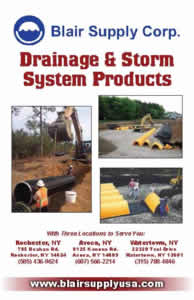Blog
About Water Main Repair
A busted water main will cause water to flood in streets, parks, gardens and buildings, causing lots of damage which is costly to fix. To keep your water main working properly, you will need to do regular maintenance on it to keep it in proper working order. A broken water main can quickly cause a lot of problems to the surrounding property and area if not fixed immediately.
What Is a Water Main?
A water main is the main supplier of water to a particular destination, usually a building of some kind. If you’re in a municipality, water usually flows under the street or ground to a pipe that connects to your home, commercial building or industry. From there, the water moves through the various pipes, toilets and taps into the building. If the main breaks, you’ll need to turn off the water supply at the source which can either be done at the building or a nearby water meter. Holes or cracks in the water main will develop time, usually as a result of external corrosion from the soil or frost which is why it’s important to do regular maintenance.
If your public utility company doesn’t shut off the water flow first, you can locate the building shut-off valve usually next to the water meter and turn the water flow off yourself. This is usually done with a water meter key so ensure all your staff know where it is located.
While it’s usually the responsibility of the city or municipality if the water main is on public property, if the water main burst on your property, you will be responsible for all costs and repairs.
Regular Maintenance
If you’re in charge of either a commercial or industrial property, you should service your water main regularly, especially if your plumbing is old.
Age and corrosion are the two most common reasons for a water main to burst. If there is nearby construction, it can also cause damage so you should get the city plans for the surrounding area before you start any digging.
If the plumber is doing scheduled maintenance, he might decide that you need to replace the water main. Replacing the water main is a big project, but in some cases, it’s necessary to prevent flooding and damage to the surrounding area. Again, if the water main is on your property, you’re responsible for replacement.
Common Water Main Problems
A large leak in the water main will cause water to pool either on the ground or in a wall. You might see puddles, or you may notice the ground is soggy. If this is the case, you should identify the leak immediately and turn off the source.
Water can travel far so where you first identify the leak may not be where the leak is coming from. A leaky water valve is one of the most common problems because they are where the pipes are connected to each other. Some types of water valves are more prone to leaking than others. It may be an easy fix, possibly as simple as tightening the packing nut on the water valve to stop the leak. If that doesn’t work, you should call a plumber to fix it.
One way to determine if it’s the water main or something else, is to test the various exit points. If only one drain is backed up in a building, the situation is likely just that drain. However, if most or all of your sinks, drains, and toilet drains are backing up, then there is probably an issue with your water main.
The Power of the Water Meter
One of the easiest methods for detecting water leaks utilizes the buildings water meter which is commonly located on the side of the building. Many of today’s water meters feature a leak detection gauge, which will react to unusual water usage. If you notice the gauge spiking, it might indicate a leak.
After learning how this meter functions, you can shut of all water utilities in the building. This will stop water from flowing from everything from sinks, fridges, and toilets. Once all water consuming items are shut off, check your water meter and record the dial and time. After about thirty minutes reread the water meter and see if anything has changed. If you have a leak, the meter have changed, and there is a high possibility you have a leak.
Keep an Eye on Your Water Bill
The water main is usually out of sight, either buried or inside walls or floors. Some leaks may not be immediately apparent with a water main. Slow leaks are sometimes not immediately apparent.
If you suspect a water leak, take a look at your monthly water bill. If your bill is more expensive than usual, without any reason, often that’s the first clue that there’s a problem somewhere in the plumbing. Of course, this method isn’t foolproof, though. A small leak may continue for months without causing major damage or expense. However, the pooled water will eventually cause rot and other water damage. Unfortunately, if this is the case, ripping out and repairing walls and flooring are more expensive than replacing or repairing the faulty pipe.
As mentioned, an unnoticed leak in your water main can cause a large amount of structural damage. This can include damage to flooring and walls, mildew and mold issues which is expensive to fix. Remember, leaks are often located underneath floors or in walls and as such hidden from view until they cause significant damage without you even noticing.
Blair Supply is a family run business that sells and rents specialty equipment. Our mission is to remain an innovator and leader in the ever-changing markets of utility construction. We have helped companies fix and build water mains for decades.






